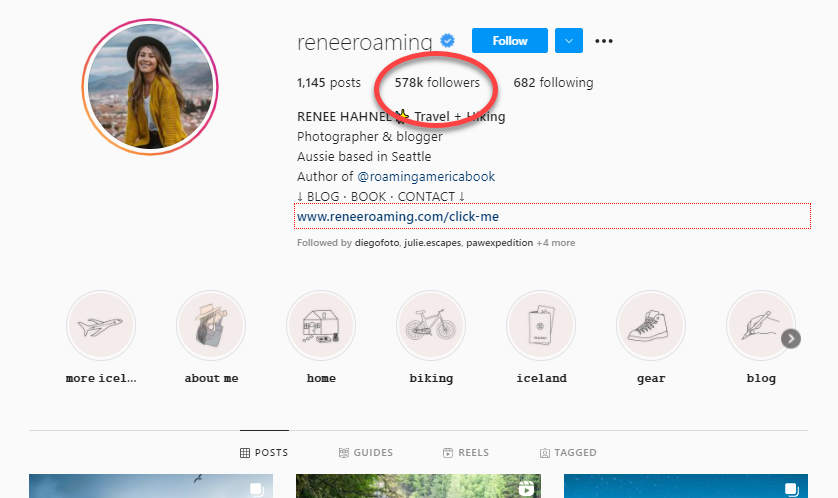As more brands jump into influencer marketing, many B2B brands sit on the sidelines, wondering if they should, too.
Five years ago, B2B brands were still comfortable with their marketing formula. It involved making product announcements, attending industry events, and going on roadshows to connect with their target market, but each year has been getting more challenging.
Content marketing is more aggressive than ever, and industry events keep getting more expensive. All this makes getting the attention of B2B decision-makers not so easy. They’re educated, sophisticated, skeptical of marketing tactics, and oversaturated with content.
However, the fundamental truth remains: People like to buy from others. It’s also compelling to get involved with influencers because they add that personal touch to a brand and its products.
The trouble is that B2Bs have a more challenging time getting started because their pathway isn’t clear. Articles on the topic are often clickbait, loaded with unrealistic statistics, and decidedly consumer-centric.
Therefore, I’ve compiled this list of 15 truths for all B2Bs looking to use influencer marketing.
Let’s get started:
1: Your sales process is longer
The average B2B sales process takes six months to complete – which is far different from the average beauty brand selling to millennials.
B2B brands have more touchpoints with the customer because purchase decisions require research, can run into millions of dollars, and can include an implementation process.
Also, relationships often play a crucial component in B2B purchase decisions involving a professional sales team and company executives.
Therefore, your business and how you work with influencers are also different.
2: You Don’t Need Instagram
Instagram is a visual social platform, making it well-suited to consumer products. Products often require little more than an alluring photo and caption to stoke interest and even sales. That’s why fashion, beauty, and travel brands do well with influencers there.
However, B2B brands are different and require a different approach.
For example, no one purchases a Caterpillar tractor costing $ 650,000 because of an Instagram post.
Therefore, comparing your business to how a consumer brand works with influencers doesn’t help you.
Consider (carefully) who your target audience is, where they congregate online, the content they consume, and who they follow for advice.
This will lead you to where you need to be.
3: Focus on relevance first
Relevance is the most essential quality to look for with influencers.
Social media reach can sometimes matter, but your efforts will go to waste without relevance.
For example, if your business is industrial chemicals, your influencers should know about your industry, how it operates, the industry issues, the regulatory environment, the major players, and have a track record of experience there.
Otherwise, you are throwing spaghetti at a wall, hoping it sticks.
4: Look to partners and customers
A simple and easy place to look for influencers is strategic business partners and customers.
You can find executives and employees there who blog, speak at conferences, author books, and have followings on social media.
Connecting with them can help you get introduced to third-party influencers they know and trust.
Use this to your advantage.
5: Leverage industry events
B2B companies allocate most of their annual marketing budgets to industry events.
The good news is that many influencers attend these events, too.
Find out who’s going and arrange to meet with them while there.
If the influencers aren’t planning to attend a particular event, perhaps you can invite them?
6: Start small and scale later
Getting started is simple and doesn’t require many resources.
Concentrate on building relationships with a core group of influencers to start.
As you get comfortable, you can recruit other influencers into your program as it matures.
Think of it like building concentric circles around one another and building slowly over time.
Don’t worry about scaling for the first six months.
7: Bigger isn’t always better
Influencers with large social followings attract brands like moths to a flame.
The allure of a large audience is often too tempting to ignore.
However, just because an influencer has a large social following doesn’t mean they can help you meet your objective.
For many B2Bs, influencers with smaller social followings can be more effective because they reach your target audience better.
Remember that relevance is the essential quality you want in your influencers.
8: Invest in education
Education is a two-way street.
Invest in your influencers to inform them about your company, products, services, philosophy, and goals.
Also, learn more about your influencers, their content, and their followers.
The more you know about them, the more you’ll be able to find ways to work together.
9: Personal touch over automation
Media stories about influencer marketing often tout the benefits of automation.
While it works for consumer brands managing large numbers of influencers, it’s not necessary for B2B brands.
You don’t need many influencers, so automation isn’t necessary and doesn’t make sense.
Invest in the personal touch and get to know your influencers.
10: Master the vetting process
Appearances can be deceiving online, so be sure to vet influencers carefully.
Check to see if they have the expertise they claim to have and are connected with other influential people in your business community.
Also, understand what kind of content they like to create, how often they publish, and the quality of their content.
Don’t forget to check for fake followers on social media.
11: Embrace storytelling
People like to buy from others because they tell stories about why and how they do things.
Influencers are storytellers by nature, so let them tell your brand story for you.
You’ll need to relinquish some measure of control over your messaging, which enables the influencers to be genuine in how they tell it. It enables their creativity.
If you don’t allow them to express themselves in their own way, you’re being too controlling, and that defeats the purpose of influencer marketing.
It’s all about getting other people to tell your story for you.
12: Play the long game
The short-term mindset has no place here. Think about what kind of content you need, when you need it published, and where you’d like it to appear.
Customer journeys are longer for B2B brands, so work with influencers with that in mind.
Get to know the influencers in your niche, cultivate relationships with them, and look for opportunities to work together.
Look to develop content with your influencers that adds value and helps your customers understand why your brand is superior.
13: Communicate often
Once you establish contact with influencers, reach out to them even if you aren’t working with them on anything particular.
Follow them on social media and contribute to conversations there. Let them know you care about their content, their ideas, and the projects they are involved in.
Add value by offering your opinions and ideas and asking thoughtful questions.
Remember, active followers get more attention than passive ones.
Influencers will have a higher regard for you if you participate.
14: Invest in relationships
Getting to know influencers opens up new opportunities to create content, find other influencers, solicit ideas, conduct surveys, commission research, involve them in assets you create, and invite them to your events.
Invest in relationships, and you’ll get a great return on investment.
This is where the real benefits are. Cultivate your relationships with influencers like you would a garden.
15: Be mindful of conflicts of interest
Many influencers work with brands on a short-term basis, but occasionally, some contract with other brands long-term.
Therefore, vet your influencers carefully before divulging too much information.
Look at their content carefully for telltale signs that such a relationship exists.
If in doubt, you can reach out to them and ask.
Remember, they are professionals, too.
Wrapping Up
Following the lead of consumer brands doesn’t translate for B2B companies. By adopting these principles, you’ll use the mindset necessary to work with influencers now and well into the future.
Got questions? Let them fly in the comments below.





One question that popped into my mind while reading this is: How can smaller B2B businesses, with limited budgets, effectively leverage influencer marketing? Are there any creative strategies or platforms you’d recommend for businesses with modest resources? I’d love to hear more about that!
One myth about influencer marketing is that you need lots of influencers to make a campaign work. Nothing could be further from the truth. Smaller B2B companies should look to work with a small group of well selected influencers who create content aimed at their prospective buyers. The point is starting small. You can even start with one if you have to, and then work your way up from there.
As to platforms and tools – well, there are too many to count. But from our experience Onalytica and Thinkers360 are two great places to start looking for B2B influencers.